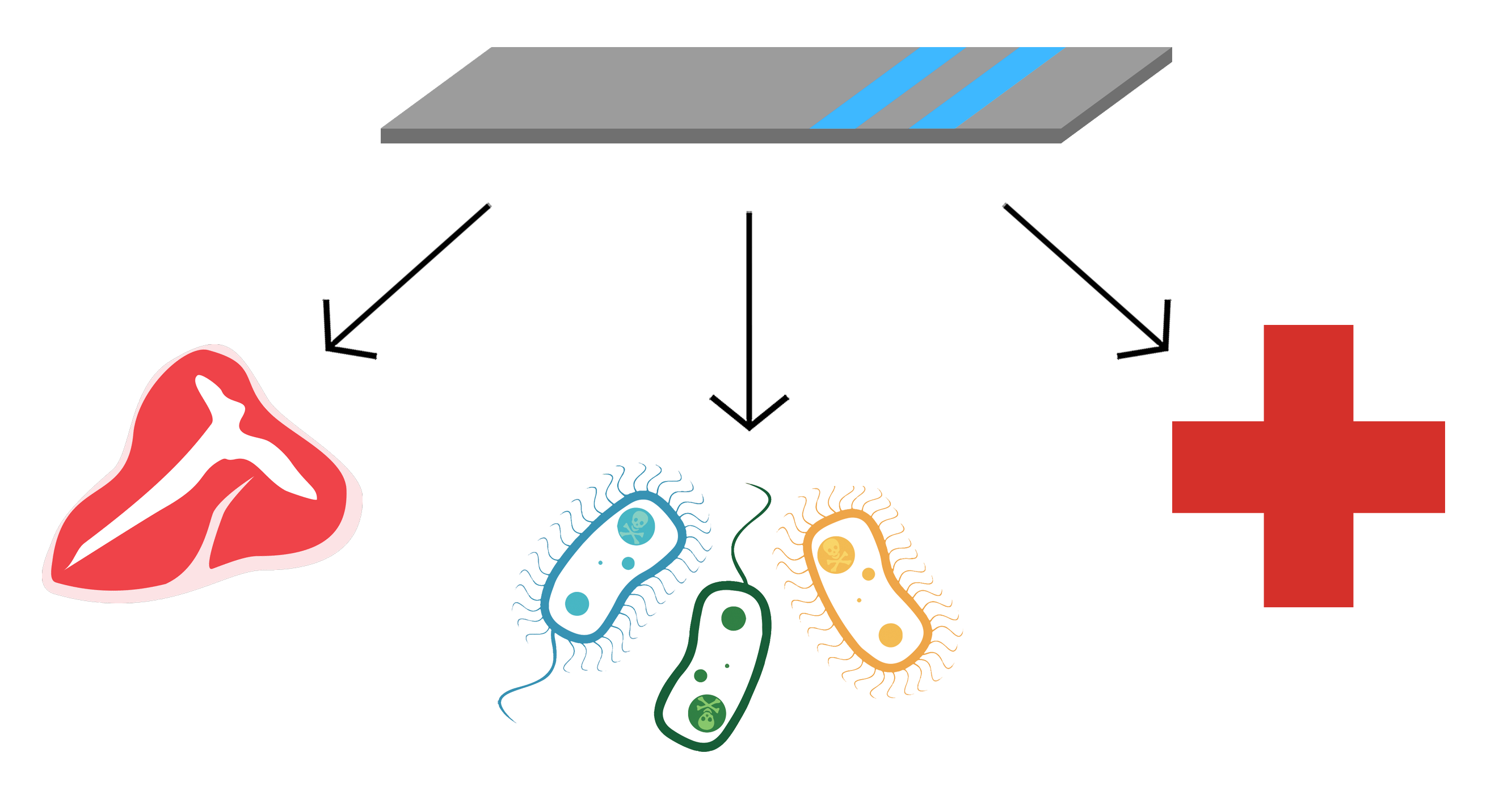Team:Calgary/Project/HumanPractices/Platform
From 2013.igem.org
Our Platform
Our Platform
The primary goal of our project was to develop a nucleic acid based sensor for the detection of super-shedder cattle that contain copious amounts of Enterohemmorhagic E. coli (EHEC) within their gastrointestinal system. Being able to detect this EHEC within cattle would allow us to limit the EHEC contamination of various products such as beef, produce and water. Throughout the process of building this project however we quickly realized that our system could be effectively applied to multiple industries and situations. The system we are building makes use of TALE proteins to bind our target DNA. These DNA binding proteins can bind different DNA sequences due to alterations in the primary structure of the proteins in regions called repeat variable di-residues (RVD). The amino acid code of these RVD regions has been unlocked however which in effect means we can easily engineer our TALE proteins for practically any DNA sequence of interest.
Combining the power of TALE proteins with the design of our capture strip assay we have a system that could be modified to work with many different applications in industry and society. The modularity of TALEs will allow us to design our system to target DNA sequences in order to solve the problems of today. This can range from identifying the strains of bacteria present in the sputum of cystic fibrosis patients to detecting dangerous organisms that could pose a biosecurity threat (Figure 1).

Figure 1. Our platform biosensor can be applied to many different industries and situations. Examples of this include the food industry, health applications and biosecurity applications.
Beyond the potential for being a platform for industry, the individual aspects of our FerriTALE system can also be put to use in future iGEM projects. In order to help bring TALEs to a broader audience within the iGEM community we added KasI restriction cut sites to the 3’ end of the TALEs, upstream of the coils in a fusion backbone (BBa_K1189021, BBa_K1189029, BBa_K1189030, and BBa_K1189031). Using this cut site future teams will be able to swap the promoter of the TALEs with ease. This allows the TALE part to have tune the expression level of the protein with greater ease. Additionally this cut site makes it easy to switch out the TALE nucleotide-binding domains allowing future iGEM teams to customize TALEs to their target sequences with greater ease. These TALE proteins are normally expressed in eukaryotes as well. Due to this the TALE proteins contain the eukaryotic Kozak consensus sequence. The presence of this sequence however interferes with the protein’s expression in bacteria. In order to make TALEs more viable as a part to be used in the iGEM registry we removed this sequence so that it can easily be expressed within bacteria.

Figure 2. Using our built-in cut site the binding domain of our TALEs can be switched out with different binding domains making it easy to custom tailor TALEs to virtually any target DNA sequence.
Another part of our system that we submitted to the registry that can have a wider applicability beyond our system are E- and K-coils (BBa_K1189010, BBa_K1189011, BBa_K1189012, and BBa_K1189013). These coils are synthetic binding domains that heterodimerize with each other with a high affinity and high specificity. Fusing the coils with larger proteins such as ferritin our system to fold and assemble correctly without interference while still maintaining their coil binding qualities. In the context of our system this allows us to easily swap out components allowing us to customize our final system. Additionally these coils have application in other contexts such as affinity purification, capture systems, and developing self-assembling biomaterials (Apostolovic and Klok, 2008). The various applications that coils have been implicated in make these coils a useful part for future iGEM teams to make use of.
The ferritin nanoparticle itself also has many uses as a part in the iGEM registry. The protein itself acts as a scaffold within our system (BBa_K1189018, BBa_K1189019, BBa_K1189020, BBa_K1189021, BBa_K1189024 and BBa_K1189025). Using either direct fusions (if the protein is small enough) or the power of E- and K-coils ferritin can effectively act as a scaffold system (Figure 3). In the case of our system we were scaffolding TALE proteins. This scaffold however could be used however to create unique reporter systems such as GFP-ferritin or whatever the creative minds of iGEM can think of. Additionally the iron core of ferritin presents another opportunity as a platform system. We have already demonstrated that chemically modifying the core of ferritin can be used to make an effective reporter (Prussian blue ferritin) (Figure 4). Another potential use would be making ferritin into magnetoferritin (we experimented with this early on in the summer) or using ferritin as a nanocage for other metals. Overall this summer we believe we have developed our system as both a platform biosensor and the individual components as useful platforms for future iGEM projects.

Figure 3. Ribbon visualization of the the final construct, composed of the ferritin-E-coil scaffold (BBa_K1189018) bound to TALE-K-coil detector (BBa_K1189030).

Figure 4. Chemically modifying the iron core of ferritin allows ferritin to be moulded fit a wide magnitude of applications. Additionally the ferritin subunits can act as a nanocage to encapsulate completely new cores.
 "
"
